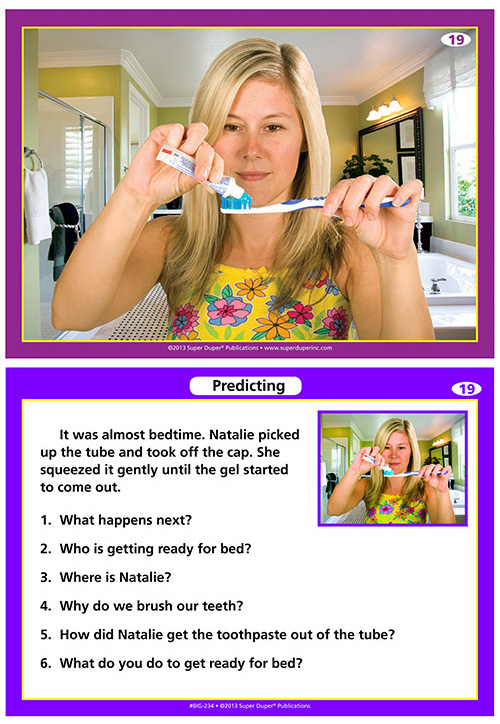 Help young learners develop expressive and receptive language skills with this comprehensive workbook filled with 33 reproducible lessons! This week only, you can also take 15%* off your order of “Developing Receptive & Expressive Language Skills in Young Learners” by SLP Jean Gilliam DeGaetano. Just use our promo code JDGLANG during check-out online or over the phone with us.
Help young learners develop expressive and receptive language skills with this comprehensive workbook filled with 33 reproducible lessons! This week only, you can also take 15%* off your order of “Developing Receptive & Expressive Language Skills in Young Learners” by SLP Jean Gilliam DeGaetano. Just use our promo code JDGLANG during check-out online or over the phone with us.
Each lesson in this workbook is accompanied by an Instructor Worksheet page that covers 4 sections of questions involving answering “Yes” or “No,” responding verbally, or responding non-verbally by pointing to the correct answer. “Developing Receptive & Expressive Language Skills in Young Learners” is a great workbook that provides a variety of techniques, with adequate repetition within each to develop receptive and expressive language skills in both verbal and non-verbal children, mainstream ages 3–7.
Don’t forget to apply our promo code JDGLANG at check-out to save 15%* on your order of “Developing Receptive & Expressive Language Skills in Young Learners” this week!
*Offer is valid until 11:59pm EST on March 10th, 2015. Not compatible with any other offers. Be sure there are no spaces or dashes in your code at check out!



 With the
With the 



 What’s Happening Here?/What Comes Next? has the students talk about what is going on in the picture or what might happen next.
What’s Happening Here?/What Comes Next? has the students talk about what is going on in the picture or what might happen next. Look, Listen & Infer
Look, Listen & Infer








